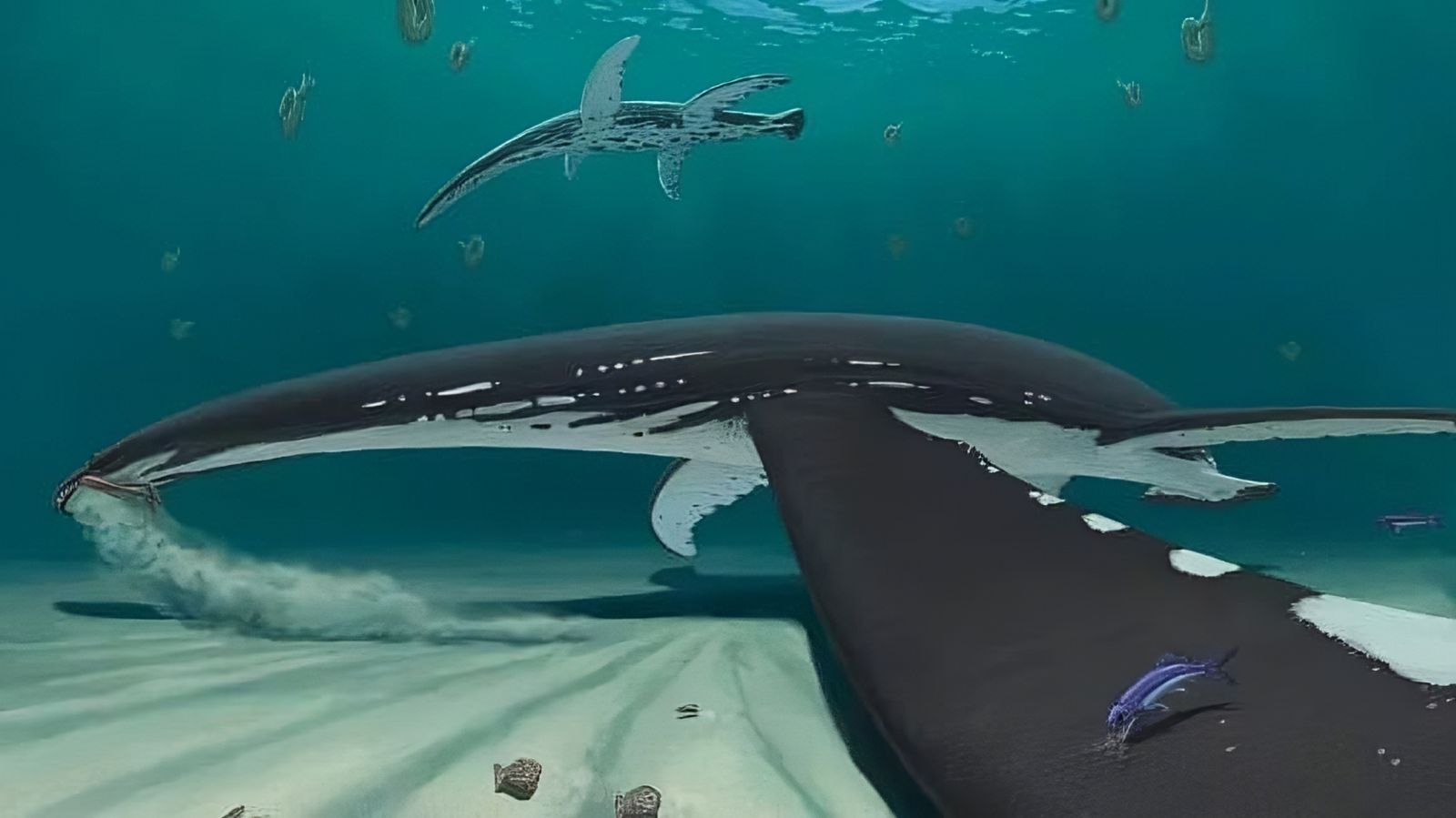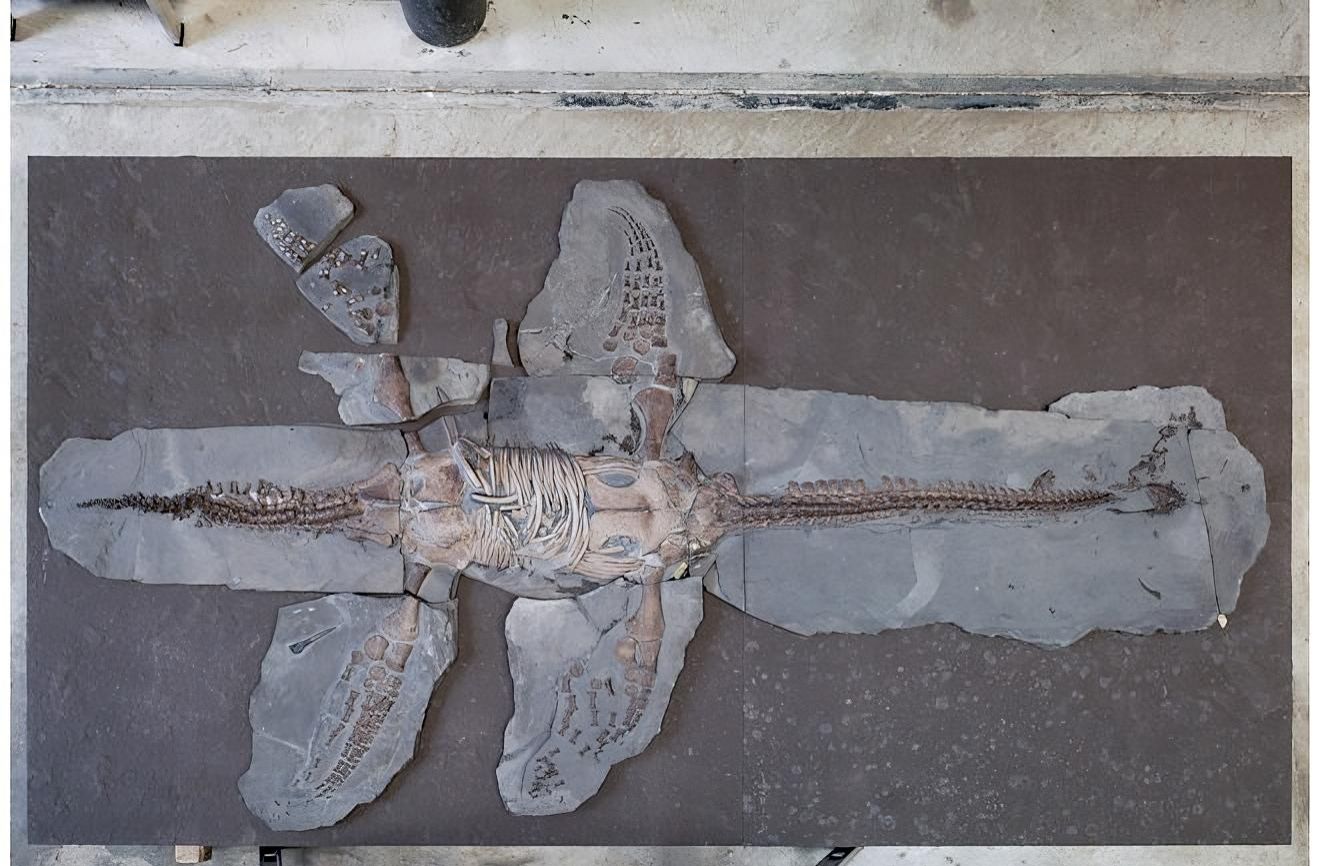Exceptional discovery of skin on a plesiosaur fossil 🦖
Published by Cédric,
Article author: Cédric DEPOND
Source: Current Biology
Other Languages: FR, DE, ES, PT
Article author: Cédric DEPOND
Source: Current Biology
Other Languages: FR, DE, ES, PT
Follow us on Google News (click on ☆)

Reconstruction of the new plesiosaur with scales on the pectoral fin and smooth skin without scales along the body, as reported by this new plesiosaur fossil. This is a significant update to how we reconstruct plesiosaurs, which has otherwise not changed much since their initial discovery over 200 years ago.
Credits: Joschua Knüppe
Plesiosaurs inhabited the oceans of the Mesozoic for over 130 million years. Their distinctive body, with a long neck and powerful flippers, allowed them to swim efficiently and hunt marine prey. Although these reptiles have been a subject of study for scientists for two centuries, little information about their external anatomy has been discovered until now. This pioneering study, conducted by a team from Lund University, has provided unprecedented insights through the analysis of soft tissues from a fossil found near Holzmaden, Germany.
Skin adapted for swimming and moving on the seabed
The researchers observed that the plesiosaur's skin had a varied texture: smooth around the tail and front flippers, and scaly on the rear flippers. This distinction could be linked to specific functional needs. The smooth skin, adapted for swimming, promoted hydrodynamics and speed for capturing marine prey such as fish or squid-like animals.
On the other hand, the scales on the rear flippers would have been an adaptation for moving on rough seabeds. These scales would have allowed the plesiosaur to stabilize and move efficiently on uneven underwater terrain, facilitating its search for food. This type of skin is a feature rarely found in fossils.
A major discovery on soft tissue preservation
Soft tissues, such as skin, are generally very rare in fossils. However, the Lund team was able to examine an exceptional specimen from the Posidonia Shale, a geological formation renowned for its exceptional fossil preservation. This fossil, dating back 183 million years, allowed for detailed analysis thanks to advanced imaging techniques and the near-perfect preservation of skin cells.

This discovery allows for a reexamination of hypotheses about plesiosaur biology and enables more accurate reconstructions of their appearance and lifestyle. It also paves the way for further studies on how these marine reptiles adapted to their environment during the Jurassic period.
Discoveries shedding light on the evolution of marine reptiles
Plesiosaurs evolved in a marine environment very different from today's. This study shows how seemingly contradictory physical characteristics – smooth skin for fast swimming and scales for moving on the seabed – allowed plesiosaurs to thrive in this ecosystem. The results highlight the importance of soft tissue preservation for better understanding species' adaptation to the demands of their environment.
The researchers believe that this discovery could also provide essential information on the evolution of marine reptiles and the different locomotion strategies in aquatic environments. This study opens the door to future research on how plesiosaurs interacted with their environment and prey.
To go further: Why is soft tissue preservation so rare in fossils?
The preservation of soft tissues, such as skin, is extremely rare in fossils. Indeed, most organic tissues decompose quickly after the animal's death, leaving only hard parts like bones and teeth.
However, certain exceptional geological conditions, such as the Posidonia Shale in Germany, allow for nearly perfect preservation of these tissues. This type of fossil, very rare, provides valuable information on the appearance and biology of extinct creatures.
Thanks to advanced imaging techniques, researchers can analyze these tissues on fossils millions of years old, thus bringing new insights into prehistoric animals.